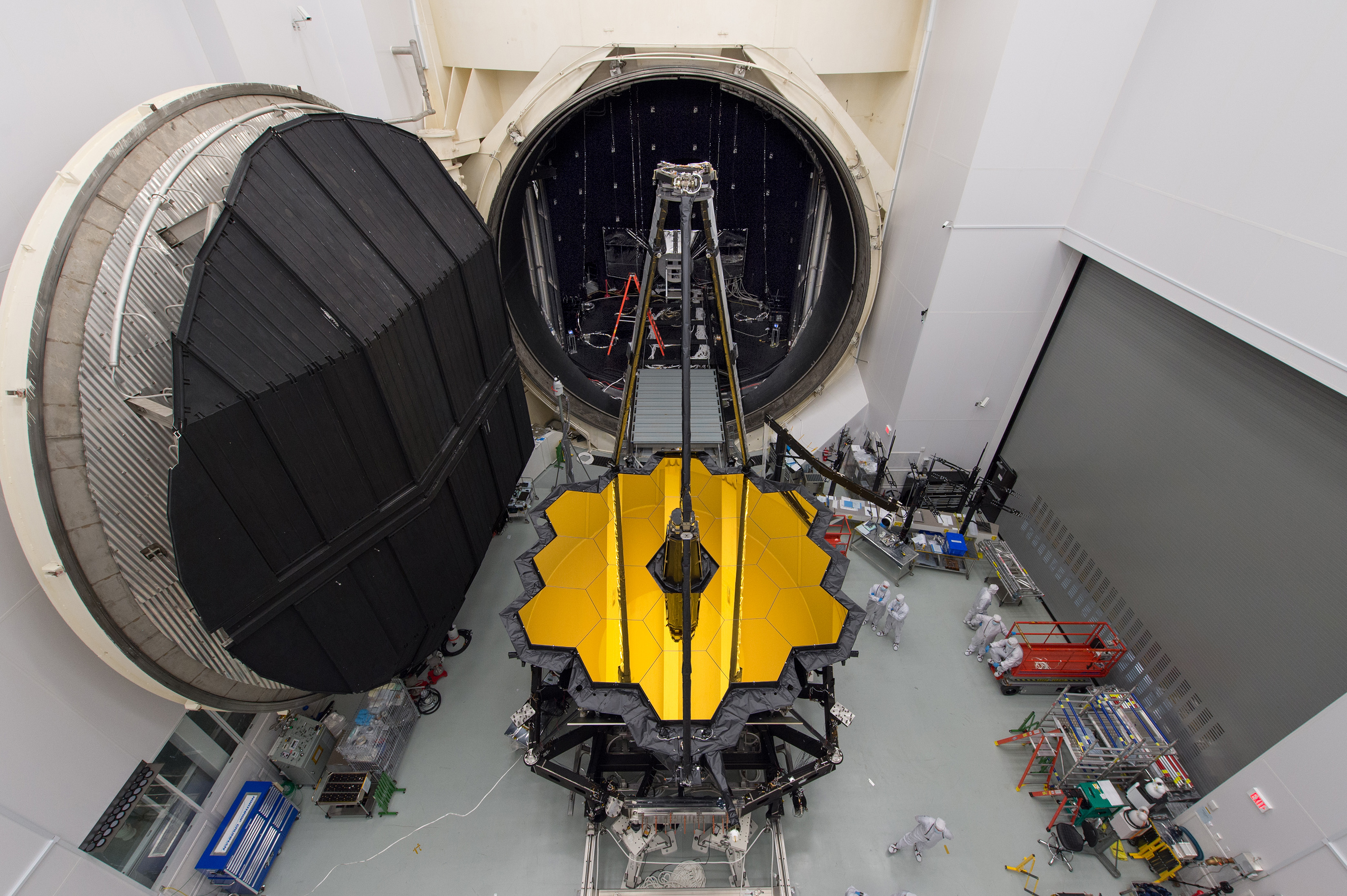
In 16 months, the most powerful space telescope ever built is scheduled to launch from Europe’s Spaceport in Kourou, French Guiana, rising with the morning sun from the edge of the Amazon. The James Webb Space Telescope aims to show us the universe like we’ve never seen before, but unlike the Hubble Space Telescope, which operates in orbit around Earth and is (or was) accessible to NASA’s astronauts, Webb will operate at a special “gravity island” called Lagrange Point 2 (L2), one million miles away.
That said, there is nobody to call to go visit and make repairs if something breaks or doesn’t work once it reaches space. Potential issues need to be addressed on the ground through rigorous testing, and now the multi-billion dollar observatory is ready to begin its final cryogenic thermal vacuum testing before launch at NASA’s Johnson Space Center (JSC) in Houston, TX.
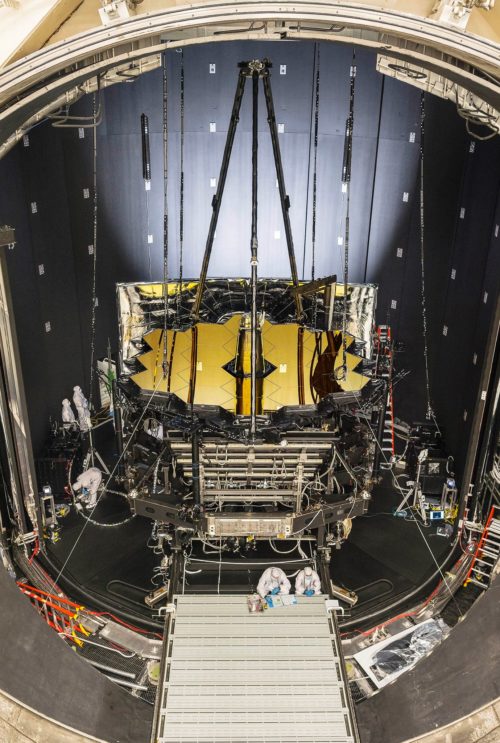
Webb’s orbit at L2 will be special in that it will stay in line with the Earth as it moves around the Sun, allowing the satellite’s large sunshield to keep Webb operating in extreme cold and protect it from the light and heat of the Sun and Earth (and Moon).
In order to detect the infrared light from faint and very distant objects, the telescope needs to operate in an environment of -370° F (-223° C, or 50 Kelvin), so NASA needs to test it under those conditions on the ground to verify its performance as an end-to-end system and prove its sensitive optics and instruments will perform as planned in space.
To accomplish this, Webb was placed inside NASA’s mammoth “Chamber A” at JSC on June 20, once used to test Apollo moon mission hardware and suited up astronauts. Once the door closes, it will begin 93 straight days of around-the-clock thermal vacuum testing, reaching around -393° F (-236° C, or 37 Kelvin).
At 55 feet (16.8 meters) in diameter by 90 feet (27.4 meters) tall, the U.S. National Historic Landmark is the largest high-vacuum, cryogenic-optical test chamber in the world. The main door alone, which operates hydraulically, is 40 feet in diameter (12.2 meters), and weighs 40 tons.
Engineers and technicians from JSC, NASA’s Goddard Space Flight Center in Greenbelt, Maryland, along with various contractors, spent the last few years making major upgrades to Chamber A for Webb. Changes were made to the chamber and surrounding facility, while others were made to the design, construction, and installation of test equipment.
“In this partnership, Johnson will operate the chamber and Goddard will run the testing,” said Paul Geithner, the James Webb Space Telescope project technical manager. “We’ve run multiple tests of everything, so we know it all works before using it this summer to test the flight hardware.”
“The 50-year-old facility’s infrastructure, like the chilled water cooling system and air conditioning, backup power and the power feed, chamber clean airflow system, and building integrity (like roof weatherproofing) were updated, refreshed, and improved,” Geithner said.
NASA outlined some additional details:
- One of the things that was newly constructed and installed in Chamber A was a cold gaseous helium-cooled ‘shroud’ that enables the chamber to reach colder temperatures than it had ever reached before. This addition was necessary because Webb’s telescope and scientific ‘instruments’ (cameras and spectrometers) will operate at temperatures of around 37 Kelvin (K), which is around minus 393 Fahrenheit (F) / minus 236 Celsius (C). Chamber A previously had only a liquid nitrogen shroud inside, and because liquid nitrogen is 77K, you couldn’t get test articles any colder than that.
“We added a cold helium gas shroud that we’ve run down to about 11K, which is (minus 440 F/minus 262 C, thus enabling us to get the telescope to its operating regime and even to as low as around 20K to reach ’survival’ temps,” Geithner said.
- Testing the Webb telescope requires a high vacuum and extremely low temperatures. The telescope also needs an arrangement that holds it and its test equipment in precise relative alignment inside the chamber while isolated from any sources of vibration, such as the flow of nitrogen and helium inside the shroud plumbing and the rhythmic pulsing of vacuum pumps. The engineers installed a massive steel platform suspended from six steel rods (vibration isolators) about 60 feet long (18.2 meters) each and about 1.5 inches (or 38.1 mm) in diameter, to hold the telescope and key pieces of test equipment. They installed sophisticated optical telescope test equipment including an interferometer, auto-collimating flat mirrors, and a system of photogrammetry ‘precision surveying’ cameras, and they already did tests with a surrogate ‘pathfinder’ telescope.
- Webb is always kept in a clean environment to prevent dust and dirt from degrading its performance. The inside of Chamber A is clean, but unpacking, unfolding, re-folding and re-packing the Webb telescope requires a lot of space and therefore needed to be handled outside the chamber. So, engineers at NASA Johnson built a large cleanroom around the gaping entrance to Chamber A. The cleanroom provides room for the telescope to be hoisted from its shipping container and ‘unwrapped’ from protective bagging, deployed, rotated from horizontal to vertical, placed on its test platform, and finally slid into the chamber on rails and hung from the six long suspending rods, all in an ultra-clean environment. Even though the new cleanroom is big, it is barely large enough for these activities.
The telescope successfully completed its integration and other testing at Goddard earlier this year. Engineers carried out various environmental tests, and put Webb through vibration and acoustics tests to ensure it can handle the violence of launch. They also took precise measurements on the shape of Webb’s incredible beryllium gold-coated mirrors all throughout with an interferometer, which records and measures the ripple patterns that result when different beams of light mix and their waves combine, because Webb’s optics need to be shaped and aligned more accurately than waves of visible light that are less than a thousandth of a millimeter long in order to work correctly.
More from NASA:
Making measurements of the mirror shape and position by lasers prevents physical contact and damage (scratches to the mirror). So, scientists use wavelengths of light to make tiny measurements. By measuring light reflected off the optics using an interferometer, they are able to measure extremely small changes in shape or position that may occur after exposing the mirror to a simulated launch or temperatures that simulate the subfreezing environment of space.
During a test conducted by a team from Goddard, Ball Aerospace of Boulder, Colorado, and the Space Telescope Science Institute in Baltimore, temperature and humidity conditions in the clean room were kept incredibly stable to minimize fluctuations in the sensitive optical measurements over time. Even so, tiny vibrations are ever-present in the clean room that cause jitter during measurements, so the interferometer is a “high-speed” one, taking 5,000 “frames” every second, which is a faster rate than the background vibrations themselves. This allows engineers to subtract out jitter and get good, clean results on any changes to the mirror’s shape.
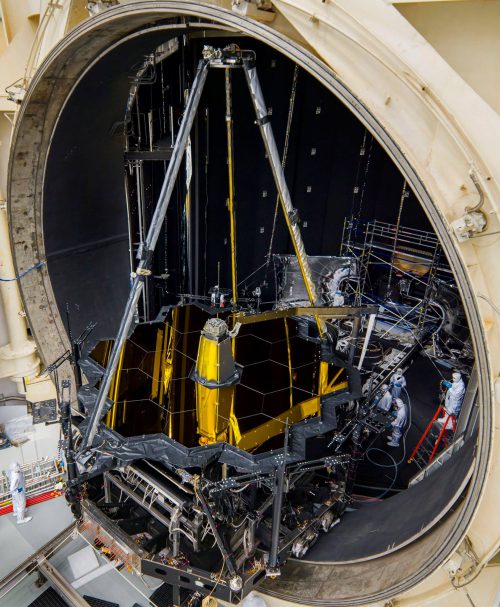
“The team was incredibly ingenious in how they performed these measurements and the results give us great confidence we have a fantastic primary mirror,” said Lee Feinberg, Webb’s telescope optical element manager.
– You can read more on the mirrors specifically HERE!
The telescope was transported from Goddard to JSC on a C-5 cargo airplane May 4, and has since been carefully hoisted from its climate-controlled shipping container, unpacked, deployed, rotated from horizontal to vertical, placed on its test platform, instrumented, and finally slid into Chamber A on rails and hung from six long suspending rods for the summer-long test.
Once the door closes, it will take several weeks for it to cool down and reach steady cryogenic temperatures, and similarly at the end it will take several weeks to warm up to room temperature again before Webb can be retrieved.
The process will then play in reverse, as Webb has one more critical stop to make before heading to South America to meet its rocket. Northrop Grumman Aerospace in California will install the Spacecraft Element (spacecraft bus and sunshield), which will complete the James Webb Space Telescope observatory after over two decades of work.
If you want watch the telescope come together and see how it being tested at any time, you can watch the telescope’s progress as it happens thanks to NASA’s “Webb-cam”, which is mounted where it has a view of the cleanroom at JSC. The camera fronts Chamber A, and although there is no view of Webb inside the chamber during testing, there will be much activity on Webb in the cleanroom itself for several weeks after.
You can watch online at: http://jwst.nasa.gov/, with larger views of the cams available at: http://jwst.nasa.gov/webcam.html.
Webb is the scientific successor to NASA’s Hubble Space Telescope, and is an international project led by NASA in partnership with the European Space Agency and Canadian Space Agency.
– Follow Mike Killian on Instagram and Facebook, @MikeKillianPhotography
.
Be sure to “LIKE” AmericaSpace on Facebook and follow us on Instagram & Twitter!
.
Missions » James Webb Telescope »




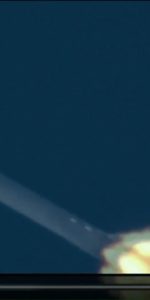
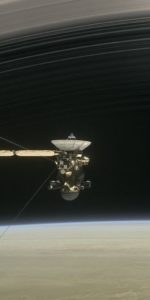
Hey there,
Its great your bullding an email list by the way people will really love what you’re sharing.
I see you’ve got some socal buttons too, I’ve share 🙂
I had a quick look around your website and I really like it but I did notice a few places/things that you could do to make it loads better. There’s a guy who wrote an article recently about 10 free and quick ways to make your website better (all free stuff) at 10WaysToBetterYourSite.wordpress.com. You should check it out I think you’d really like it.
Thanks,
Alex